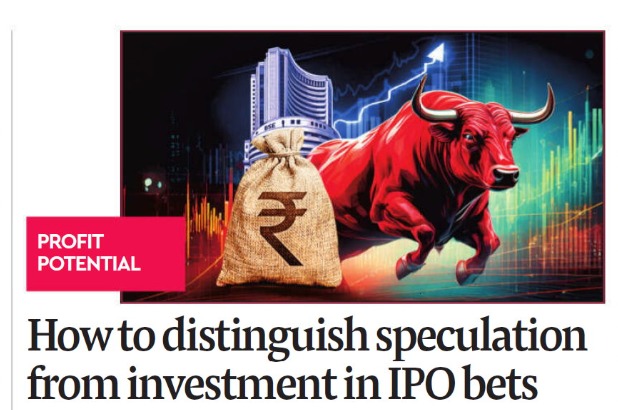IPO Investing: Where Is Your Money Actually Going?
Every Initial Public Offering (IPO) splits into two key components:
Fresh Issue: The company receives new money to expand, repay debt, or invest in technology.
Offer for Sale (OFS): Existing shareholders—founders, venture funds, or private investors—sell their stake. This money doesn’t go to the company; it goes to them.
If most of an IPO is OFS, you’re financing someone’s exit, not the company’s growth. Always check the prospectus—available free on the Securities and Exchange Board of India (SEBI) or stock-exchange portals.
If less than 30% of the issue is fresh capital, pause and ask:
Why are insiders rushing to cash out now?
Is the Price Reasonable?
Extract three years of revenue and net profit from the prospectus and calculate the Price-to-Earnings (P/E) ratio:
P/E = IPO Price per Share ÷ Earnings per Share
Now compare this with similar listed companies.
If the IPO trades at 200× earnings while peers trade at 40–50×, you’re paying five times more for the same rupee of profit.
Unless the company’s growth is spectacular, that’s overpaying.
Remember, when an IPO is priced for perfection, even a small setback—competition, cost pressure, or slowdown—can damage returns.
Can This Business Actually Make Money?
Gross Margin = (Gross Profit ÷ Revenue) × 100
Net Margin = (Net Profit ÷ Revenue) × 100
Gross margins above 60% indicate strong pricing power.
Declining margins despite growing sales suggest rising costs or weak competitiveness.
A drop in net margin—say from 6% to 2%—signals profit pressure.
Always chart three years of margin data from the prospectus to see the trendline of profitability.
Is the Company in Debt?
Debt-to-Equity = Total Debt ÷ Total Equity
A ratio above 2 means the company borrows twice its own capital—risky if earnings slip.
Below 1 is safer.
Interest Coverage = EBIT ÷ Interest Expense
A ratio below 2–3× suggests the company struggles to meet interest payments.
High debt plus weak margins is a double blow—even mild downturns can crush profits.
How Efficiently Does It Use Money?
Profitability ratios like Return on Equity (ROE) and Return on Capital Employed (ROCE) reveal efficiency:
ROE = Net Profit ÷ Total Equity × 100
ROCE = EBIT ÷ (Total Assets – Current Liabilities) × 100
ROE or ROCE above 15% = strong capital use.
Below 5% = inefficiency.
If the IPO’s ROE lags peers but demands a premium valuation, think twice before subscribing.
What About Size and Scale?
For young or loss-making firms, use Price-to-Sales (P/S) instead of P/E:
P/S = Market Capitalisation ÷ Annual Revenue
If the IPO’s P/S is 10× while peers trade at 2–3×, it’s overvalued relative to revenue.
Unless growth or margins significantly outperform peers, avoid paying that premium.
Your IPO Checklist
Download the Prospectus: Read the sections on Business Overview and Use of Proceeds to see whether your money funds growth or old investors’ exits.
Extract Three-Year Data: Revenue, profits, gross and net margins — these show consistency or volatility.
Calculate Five Ratios: P/E, gross margin, net margin, debt-to-equity, and ROE — to see if pricing matches performance.
Find Peers: Compare the IPO’s ratios to at least two listed companies in the same sector.
Decide: Is the valuation premium justified by stronger performance, or is it just market hype?
The Reality Check
With over 90 IPOs hitting Dalal Street this year, the temptation to chase listings is real.
But in markets, discipline outweighs excitement.
A simple 90-minute self-audit—downloading the DRHP, analysing ratios, and comparing peers—can save you from costly mistakes.
When you treat every IPO like a business, not a gamble, you start thinking like an investor.
In an IPO boom, math—not momentum—is your best defence.
For expert insights on IPO valuations, investor due diligence, and market participation strategies, explore perspectives from Ranjit Jha (CEO) — a thought leader simplifying complex investment decisions.
If you’re looking to evaluate IPO opportunities or diversify your portfolio, connect with Rurash Financials — your trusted partner in investment strategy and wealth creation.

